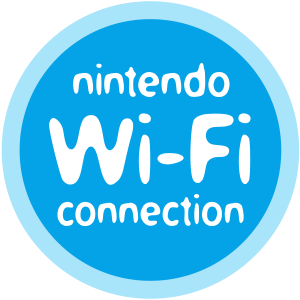An Ode to Nintendo Wi-Fi Connection – Saying goodbye to DS and Wii’s online (part 2)
Today we’ll be continuing our look at the Nintendo Wi-Fi lineage with a focus on Wii titles. The Wii’s online infrastructure surprised us time and time again with what it could (and couldn’t) do, with experiences ranging from the cohesive and fleshed out Mario Kart online to a slideshow crawl through Super Smash Bros. Brawl matches. With the rise of homebrew, we saw some interesting mods to popular games, some of which also found their way into the online scene (like Project M and CTGP). Here’s a look at some of the more popular and interesting titles that used the service and what we’ll miss most about them:
Super Smash Bros. Brawl (March 2008 NA, June 2008 EU)
Super Smash Bros. Brawl’s online was a sore spot for many, as what we got fell short of what many fans were expecting. A lot of the titles we’ve mentioned thus far were fully able and happy to function with a bit of latency, as the delay or de-sync caused would not affect their gameplay all that much. This is absolutely not the case with Brawl, as such an arena-based fighter requires as much precision and responsiveness as it can get… and that didn’t really happen.
Matches often slowed down so far you felt like you were creeping through them and while you could get things playable sometimes, it was more often than not a fight to get there. Of course, with the core gameplay being so solid, it was possible to overlook that, but it was far from an ideal situation. Although for many fans it’s hard to ignore these missteps, there’s no doubting that Super Smash Bros. Brawl remains one of the most significant titles in Nintendo Wi-Fi Connection’s history. It did something we’d dreamed about for years: taking one of the most beloved local multiplayer experiences into the new age. Fingers crossed the next generation of Smash games take to heart these past mistakes!
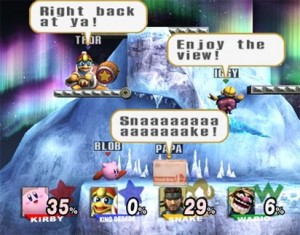
Mario Kart Wii (April 2008)
Probably the flagship title for the entire Nintendo Wi-Fi Connection era, Mario Kart Wii was popular for hardcore and casual fans alike. Boasting a whopping 12 players online, there was not a time day or night you couldn’t find a game, from when the game launched to the very end (though a total of 34+ million copies sold worldwide probably helped that).
Mario Kart Wii was a blast to pick up and play and even spawned a hardcore community of the same name. Unfortunately, much like its DS counterpart, the game’s online was eventually plagued by hackers. Infinite items became a problem, so the quality of races took an inevitable hit and once hackers broke open the Time Trials leaderboards, keeping track of the fastest legitimate times was simply impossible. Some would argue that the Mario Kart formula is just so fundamentally solid that it would be impossible to do online wrong, but it set the bar very high for future entries and will be a title most remember fondly as a shining example of what Nintendo’s online is truly capable of.
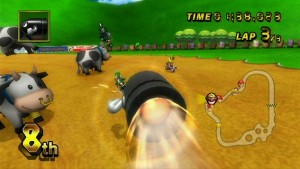
Animal Crossing: City Folk (December 2008)
If you were to mutter the phrase “Wii Speak”, most Wii owners would look at you like you were a complete lunatic. It was a niche and for the most part neglected peripheral in Nintendo’s history, though not by the fine community who played Animal Crossing: City Folk! It was the first title to make use of the peripheral and was even bundled with it for a short while, marking the first time Wii users were able to verbally communicate with each other through an online space (after jumping through the usual amount of Nintendo hoops of course).
Other online functions included an auction house for players to sell items online and Nintendo even issued a few free goodies as DLC. Now whenever the Animal Crossing series is mentioned, it’s hard to imagine what it would be like without online. However, this particular iteration of the franchise saw some steps Nintendo had not taken before and saw one of the only notable uses of the Wii Speak.
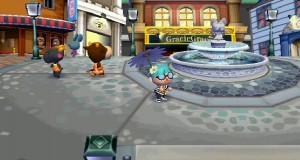
Monster Hunter Tri (April 2010)
Sure the servers have been down since April 2013 and we’ve been treated to an updated version of the game since, but Monster Hunter Tri is another example of one of the more hardcore experiences on the Wii and the online community for the game was incredibly passionate and dedicated following – so dedicated in fact the final moments of the server’s uptime have been immortalized.
Monster Hunter’s online was something Capcom was serious about; the online component of the game had more quests than what was available offline. Up to 4 players, friends or otherwise, could meet up and take on fierce bosses, having to use a great deal of communication to get the right balance of traps, bombs and distractions to take down the gargantuan beasts series fans have come to know and love. Additionally, Monster Hunter Tri offered the use of a traditional lobby system rather than friend codes which made it so much easier for players to connect (could we take note of that for future generations? Please?)
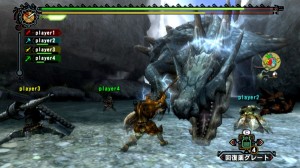
The Last Story (Febuary 2012 EU, August 2012 NA)
Operation Rainfall was a fan campaign that will forever be remembered in the Wii’s history, in which passionate fans looked to have their voices heard. Eventually, the strong feedback led to the localization of a trio of Wii RPGs.
The Last Story was one of those three titles – along with Xenoblade Chronicles and Pandora’s Tower. It featured a fleshed-out an online experience, including two major modes. The first, deathmatch, put players in a 3-on-3 arena setting, allowing them to play as main, guest and enemy characters. Co-op mode effectively acted as a ‘Boss Rush’ romp where two or more players teamed up to defeat each of the game’s bosses in succession. Most will remember The Last Story for its loaded and fascinating history, though those who spent time with the multiplayer will no doubt remember it lovingly as one of the shining examples of what the Wii hardware was capable of when pushed to its limits.

And with that, it’s time to say goodbye. It’s been a memorable 8 years on Nintendo Wi-Fi Connection and it’s certainly been interesting to watch Nintendo try to adapt in the online space. As we move forward with the new generation of consoles, it will be fun to see in the coming months what they have learned for the Wii U and how they will try to continue this tradition of fantastic Nintendo experiences.
